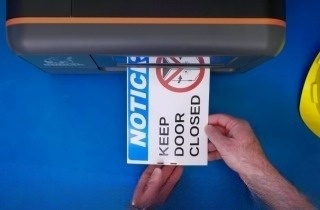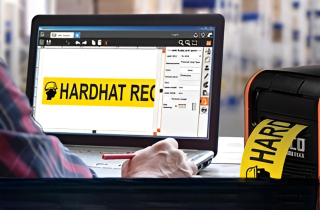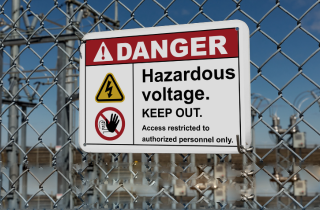Safety Signs Best Practices for Safer, More Compliant Workplaces

How Does Proper Safety Signage Improve Compliance and Reduce Workplace Risks?
Proper safety signs play a critical role in improving regulatory compliance and minimizing workplace risks. Clear, durable labels and signs help communicate hazards, guide safe behavior, and support compliance with Occupational Safety and Health Administration (OSHA) and other safety regulations. When a workplace safety sign is placed strategically and designed with clear messaging, it reinforces training and helps create a safer, more efficient work environment.
Tools like the DuraLabel Kodiak Max Industrial Sign and Label Print System make it easy to create OSHA compliant safety signs that meet rigorous standards. On the other hand, mistakes—such as poor placement, unclear language, or lack of maintenance—can reduce a sign’s effectiveness and increase the risk of accidents or regulatory violations.
Why Safety Signs Matter for Every Facility
Across industries—from manufacturing to warehousing—safety signs serve as the front line of hazard communication. When designed and placed effectively, they not only meet regulatory requirements but also influence day-to-day worker behavior. A well-placed workplace safety sign can stop an injury before it happens. On the other hand, inconsistent or unclear signage can create confusion, leading to accidents and citations. As facilities grow more complex, having accurate, up-to-date safety signs becomes essential for both compliance and productivity. Investing in clear, durable custom safety labels is more than a compliance task—it’s a smart safety strategy.
What Happens When Workplace Safety Signs Are In the Wrong Place?
Problem
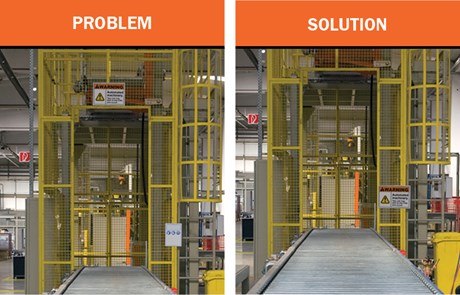
A safety sign that appears too early—before a hazard is visible—may be ignored because the risk is not immediately apparent. Workers tend to assess a workplace safety sign based on their surroundings. If the hazard is not observable, the message may lose credibility and be dismissed.
Another common issue arises when safety signs are placed too close to the hazard or positioned where they are not easily seen from a normal point of approach. In these cases, the warning may be overlooked entirely or noticed only after it is too late to act.
Solution
To maximize effectiveness, each workplace safety sign should be located where it is visible, relevant, and easy to understand. Although there is no fixed rule for sign placement, the following guidelines support safer implementation:
- Place safety signs at a readable distance from the hazard
- Ensure visibility from typical approach angles using proper font size and contrast, made possible through custom safety label printing
- Allow enough distance between the sign and the hazard for appropriate response time
- Keep signs unobstructed and legible in low-light conditions, using lighting or reflective tape when needed
- Use professional labeling equipment for hazard communication to produce signs that meet workplace conditions and regulatory expectations
Effective placement of OSHA compliant safety signs helps reinforce hazard recognition and reduces the likelihood of injury or non-compliance.
Printing Vague Messages on Safety Signs with a Label Printer
Problem
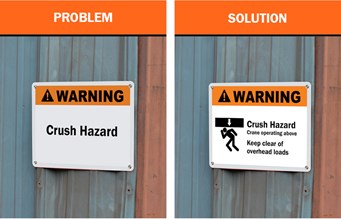
Safety signs are only effective when their messages are clear and actionable. A common issue arises when signs rely on vague wording or technical jargon. According to Dr. Green in The Psychology of Warnings, the usefulness of a warning depends heavily on the viewer’s knowledge and experience.
For example, a workplace safety sign that reads “Warning: Crush Hazard” may be interpreted in several ways. One worker might associate it with overhead loads, while another may assume it refers to being caught between vehicles and a dock. Without specific language, the sign places the burden of interpretation on the individual—which can lead to confusion and unsafe behavior.
Solution
To improve clarity, each sign should communicate a complete and precise message. When creating custom safety labels, facilities should follow these best practices:
- State the required action clearly (e.g., “Keep Clear,” “Stay Back,” or “Do Not Operate”)
- Describe the nature and source of the hazard (e.g., “Crushing Hazard – Pinch Point at Conveyor”)
- Include a visual element, such as a symbol or pictogram, to reinforce the message
Reliable labeling equipment for hazard communication—such as industrial printers—makes it easy to produce OSHA compliant safety signs with consistent formatting and layout. These improvements reduce misinterpretation, improve response time, and promote safer behavior across the facility.
Why Does Failing to Maintain Safety Signs Create Compliance Risks?
Problem
Even the most effective safety signs can become a hazard if they are not properly maintained. Over time, signs may fade, become obstructed, or display outdated information. When this happens, the result is often confusion, non-compliance, or even serious injury.
A common example occurs with electrical labeling. When electrical systems are upgraded or reconfigured, the associated hazards often change. An outdated electrical safety sign may display incorrect voltage information or PPE requirements—putting maintenance personnel and electricians at significant risk. Inaccurate labels not only endanger workers but also violate OSHA regulations for safety signs.
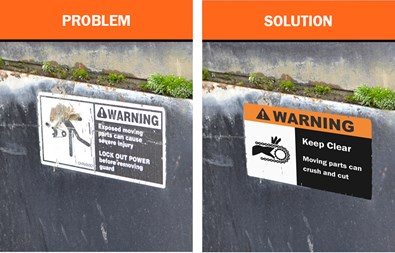
Solution
Routine inspection and maintenance of safety signs should be a formal part of every facility’s safety program. To protect workers and maintain compliance, organizations should:
- Replace any safety signs that are faded, peeling, or damaged
- Move signs that have become obscured by new equipment, storage, or other visual obstructions
- Update signs immediately when systems, processes, or hazards change
These simple steps will eliminate safety issues caused by poorly maintained signs and help keep workers safe by providing clear, accurate information.
DuraLabel Safety Sign Solutions for Any Workplace
Take workplace safety to the next level by identifying hazards and labeling them with clear, durable safety signs. Facilities that rely on outdated or inconsistent signage increase their risk of incidents and non-compliance. The DuraLabel OSHA Signage Quick Start Guide provides a practical overview of sign types, OSHA compliant safety signs requirements, and best practices for identifying and labeling hazards throughout a facility.
Whether labeling equipment, storage areas, or high-traffic zones, the DuraLabel Industrial Sign and Label Systems offer reliable labeling for hazard communication. These printers allow teams to quickly create custom safety labels that are both compliant and durable, supporting long-term safety initiatives across multiple departments.
Need help getting started? Contact DuraLabel at 1-888-789-4864, and a safety signage expert will help develop a custom solution tailored to your facility. From selecting the right labeling equipment for hazard communication to creating durable, OSHA compliant safety signs, DuraLabel provides the tools and expertise to improve safety and support regulatory compliance.
Related Resources

Choosing the Right Industrial Label Printer for Your Business Needs
In the world of industrial labeling solutions, one size certainly does not fit all. Different businesses and ...
Read
Industrial Safety Labels | Label Signage | Sign Label
The accurate interpretation of safety signs is crucial to prevent injuries and save lives. OSHA has set ...
Read
Why OSHA Lab Safety Depends on Proper Chemical Labeling Practices
Why Do Pharmaceutical Labs Need Proper OSHA Chemical Labeling? In the realm of pharmaceutical research and ...
Read.png)

